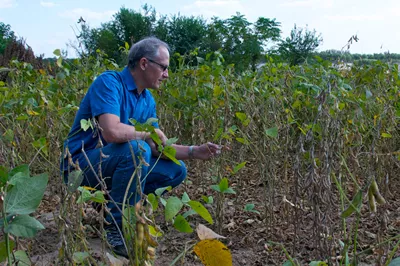
Taking climate and agriculture lessons from the ancient world
For over 35 years, U of T Mississauga archaeology professor Gary Crawford has been studying the ancient archaeological and ecological past of China, Korea and Japan to shed light on the environmental issues of the present.
Now, with recent funding from the Social Sciences & Humanities Research Council of Canada (SSHRC), Crawford will be able to bring his work – and the work of international researchers – to a new level by establishing the Centre for Historical Ecology in Northeast Asia at U of T Mississauga.
“Archaeological research in Asia has developed over the years and there are so many fascinating projects but most of the research groups aren’t collaborating,” Crawford explains. “I’ve always had a dream that if we could get the principal researchers together to consider similar issues, we could advance our thinking about what happened in the past very quickly.”
By studying the responses of early people to climate change and investigating the impact of human populations on local ecology during the time span between 20,000 to 3,000 years ago, modern society can better understand contemporary issues such as global warming, sustainability and innovations in crops.
“Northeast Asia has faced many ecological shifts—some natural, while others were caused by people through agriculture and urbanization. When the last Ice Age ended, the climate went from an intense deep freeze to milder conditions by about 13,000 years ago, quickly cooled for a thousand years, then became quite warm from about 8,000 to 4,000 years ago,” Crawford says.
Over time, people engineered their environment in various ways in response to these changes. The research team will explore the extent to which the different cultures in Northeast Asia successfully constructed their worlds to meet the challenges of their time and place.
“Climate has not been constant, so the challenges that we’re facing, our ancestors faced – how did they deal with it?”
The Centre for Historical Ecology in Northeast Asia will play a key role in finding answers to that very question by providing opportunities for collaboration amongst researchers from all over the world. So far, the centre boasts an impressive list of partners including:UC Berkeley, Archaeological Research Facility; Stanford University, Stanford Archaeology Center; University of Oregon, Center for Asian and Pacific Studies; the Royal Ontario Museum; Shandong University; German Archaeological Institute, Berlin; Chinese Acadenmy of Social Sciences; Institute of Vertebrate Paleontology and Paleoanthropology at The Chinese Academy of Sciences; and Hakodate Jomon Culture Centre.
Over the next three years, the centre will act as a central communication hub to enable ongoing collaboration, facilitate learning opportunities for graduate students at the different partner institutions, and organize rotating workshops hosted at each institution beginning with U of T Mississauga in the fall.
The workshops will allow the partners to develop a common research agenda, present and discuss research findings and brainstorm ways to share their insights on dealing with current environmental issues with the general public through exhibits and lectures.
Crawford believes that with federal funding programs such as SSHRC, Canada is able to take the initiative to develop such valuable partnerships and leverage the knowledge of the ancient past to contribute to solving today’s problems.
“This project has no limits, that’s what’s exciting about it. There are going to be unanticipated discoveries from our meeting of the minds,” Crawford says. “Those surprises, those unexpected developments of knowledge are incredibly satisfying.”
